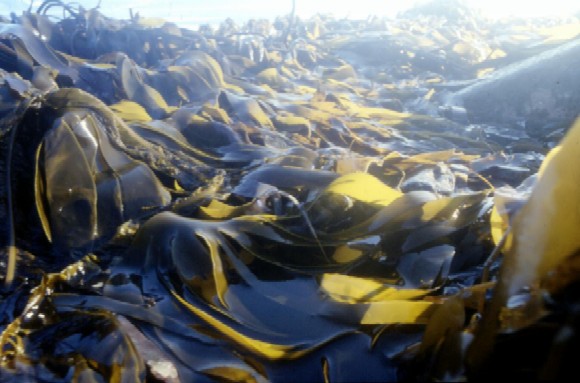|
From rxpgnews.com Fitness
The highly-fibrous seaweed extract, alginate, could be used to increase the fibre content of cakes, burgers and other types of food which usually contain large amounts of fat and a low degree of healthy nutrients, say British scientists.
Information about seaweeds and alginate from Wikipedia, the free encyclopedia: Seaweeds are used extensively as food by coastal peoples, most particularly in Japan but also in Korea, China, Indonesia, Peru, the Canadian Maritimes, Scandinavia, Ireland, Wales, Philippines, and Scotland, among other places. For example, laver is a red alga used in Wales to make laverbread, and in Japan dried, formed into sheets called nori, and used to wrap sushi. Irish moss is another red alga used in producing various food additives. Seaweed is also used for the production of Alginate, a versatile product that is used for a whole range of applications. These include the production of Agar which is used very widely in microbiology as a substrate for culturing organisms. Alginates are also used in the production of foodstuffs to improve texture and mouth-feel. Typical products are ice-cream and a range of proprietary desserts. Alginic acid (algine, alginate) is a viscous gum that is abundant in the cell walls of brown algae. Chemically, it is a linear copolymer with homopolymeric blocks of (1-4)-linked �-D-mannuronate (M) and its C-5 epimer α-L-guluronate (G) residues, respectively, covalently linked together in different sequences or blocks. The monomers can appear in homopolymeric blocks of consecutive G-residues (G-blocks), consecutive M-residues (M-blocks), alternating M and G-residues (MG-blocks) or randomly organized blocks. The relative amount of each block type varies both with the origin of the alginate. Alternating blocks form the most flexible chains and are more soluble at lower pH than the other blocks. G-blocks form stiff chain elements, and two G-blocks of more than 6 residues each form stable cross-linked junctions with divalent cations (e.g. Ca2+, Ba2+, Sr2+ among others) leading to a three-dimensional gel network. At low pH, protonized alginates will form acidic gels. In these gels, it is mostly the homopolymeric blocks that form the junctions, where the stability of the gel is determined by the relative content of G-blocks. Commercial varieties of alginate are extracted from seaweed. Certain bacterias, however, also produce alginate. Alginate ranges from white to yellowish brown, and takes filamentous, grainy, granular, and powdered forms. It is insoluble in water and organic solvents, and dissolves slowly in basic solutions of sodium carbonate, sodium hydroxide and trisodium phosphate. Purified forms of alginate are used in antacid preparations such as Gaviscon�, Bisodol�, Asilone�, and Boots Own� tablets. Alginate is used extensivly as a mold-making material in dentistry and prosthetics, and in textiles. It is also used in the food industry, for thickening soups and jellies. All rights reserved by www.rxpgnews.com |
